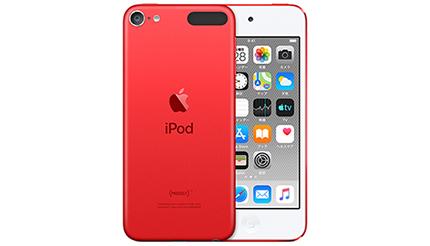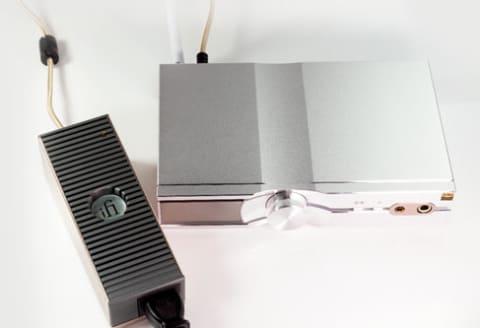It's not just Chromecast anymore.
Whether you want to watch a movie with your friends who come to your house, show your family an interesting YouTube video, or praise yourself for the pictures you took, even though you don't have anyone to show at this time. Whatever the reason, it's better to watch it on a big screen TV than on a small screen on your computer.
Fortunately, there are many easy ways to watch your computer screen on your TV, and it doesn't take much effort or money. However, in most cases, you need to install some kind of app or hardware such as a set-top box or HDMI cable.
Then, what kind of means are available and what is necessary for each is summarized below.
1. Chromecast
Google's Chromecast may have an image to use from a smartphone, but it can also be used to fly the screen of a computer to a TV. If you have a Chromecast dongle on your TV (or if your TV's OS is Android TV), it's easy to get your computer screen to your TV. You can cast from the Chrome tab window on both Windows and macOS. Of course you can use it on your Chromebook.
To do this, open the Chrome menu (three dots in the upper right), select "Cast", and select your Chromecast from the cast destinations displayed in the list. Now you will see the same Chrome tab on your computer on your TV screen. After that, even if you switch the computer side to another tab or another application, the first cast tab will continue to be displayed on the TV.
However, in the case of Chromecast, there tends to be a lag between the computer and the TV, so it is more comfortable to watch websites and photos than videos. Some video sites, including YouTube, allow you to interact directly with Chromecast. For YouTube videos, a Chromecast button is displayed in each video, and you can use it as if you were casting from your smartphone. In this case, the video will be sent directly from the web to Chromecast and will not go through your computer.
When watching content via Chromecast, you can only customize the volume, and you can't do the details, but it's simple and neat. When the cast is finished, click the Chromecast button on the toolbar, select the device and "Stop".
2. Roku
Smart dongles for TV can do the same with Roku sticks and boxes as well as Chromecast (although not officially released in Japan at the time of article translation). However, regarding Roku, Windows is more compatible and easier to use than macOS. Everything is handled on a protocol called Miracast, which is built into the latest Roku devices and Windows 10.
For Windows, click the notification bar on the right of the taskbar to open the Action Center and click "Connect". If Roku is turned on and connected to the same Wi-Fi network as your computer, it should appear in the destination list, so select it.
When I request a connection from my computer to Roku, Roku approves it, but at that time I have the option of always accepting requests from the same device in the future. To manage approved (or rejected) devices, select Settings> System> Screen mirroring from Roku's main menu. You can also turn the entire mirroring on and off from here.
Mirroring from Mac to Roku requires non-genuine tools. I haven't tested this yet, but the AirBeam TV for Mac seems to be the best (although there seems to be some lag). The price is $ 10 (about 1100 yen), but you can try it for free.
3. AirPlay
If you're a macOS user and you also have an AirPlay device like the Apple TV, it's easy to get your computer screen to your TV. AirPlay is probably the easiest for anyone immersed in the world of Apple hardware, and AirPlay support extends to non-Apple smart TVs.
If the AirPlay device is connected to the same Wi-Fi as the Mac and the settings are completed properly, press the AirPlay button (the one with a square on the ▲) on the menu bar at the top right of the Mac screen and it will automatically be the AirPlay output destination. You should be able to see it. If you select an AirPlay device here, the contents of your Mac will automatically connect to your TV.
If you can't see AirPlay on the menu bar or want to tweak the settings, open "System Preferences> Display" from the Apple menu. On this setting screen, you can choose whether you want to show the same thing as your Mac on your TV (mirror) or use your TV as your second desktop. In the latter case, you can set it on the Placement tab. If you want the AirPlay icon to appear in the menu bar, check "Show mirroring options in menu bar if available".
Mirroring works fast enough that you can comfortably watch YouTube videos, for example, but other media apps such as QuickTime and iTunes can also use the AirPlay button to broadcast videos. In either case, if you want to end mirroring, press the AirPlay button on the menu bar to turn it off.
4. Plex
Plex doesn't mirror your computer screen to your TV, but you can fly any media, whether it's video, music, or photos. So you can stream what's on your computer to your TV screen.
One of the benefits of Plex is that it has apps for different streaming boxes and dongles. If you have any smart sticks or boxes that connect your Apple TV to your Android TV or TV, there should be an official Plex app.
To use Plex, first download and install the app on your Windows or Mac. This will create a catalog of content on your local hard drive, from which you can stream. The apps on the device connected to the TV can be connected to the computer via Wi-Fi and stream what you want to see (listen to).
Plex also has paid features that allow you to pay to stream content to, for example, mobile devices or non-home devices. Prices start at $ 4.99 a month, but you can still use it for free if you just stream content from your Plex computer to a device on the same Wi-Fi.
5. AirParrot
AirParrot is a duplication of some means, requiring an Apple TV or Chromecast, for example. However, it is smart and has many functions, and it enables you to do things that Chromecast or AirPlay alone cannot do.
It can be used on both Windows and macOS, and costs $ 16 (about 1700 yen). You can try it for free, so you only have to pay for it after checking if it really works on your device. Not only can you display your computer screen to other computers, but you can also send audio to compatible speakers.
If you install the AirParrot app on your computer, it will automatically detect the receiver on your local network and you will be able to mirror your computer screen to your TV. If you don't want to mirror the entire screen, you can even stream music, videos and photos like Plex above.
The advantage of using AirParrot instead of genuine tools such as Chromecast and AirPlay is that you can use multiple devices at the same time. In addition, the quality of streaming is high (5.1 surround is also OK), and it is possible to combine such as "view the contents of Windows PC on Apple TV" which is not possible by default.
6. Windows 10 Miracast
At Roku, there was talk of connecting Windows 10 with Miracast. Miracast is used on a variety of devices and is also included on Amazon Fire TV (although some Fire TV devices may not support Miracast).
If there is no other way to connect Windows 10 wirelessly, you may want to buy a dedicated Miracast adapter. You can buy a genuine Microsoft one for around 7,000 yen, but a third party is much cheaper. However, let's check the reviews carefully before buying.
With the Miracast adapter, you can mirror the screen from your Android device, which is useful for Android users. With Microsoft's adapter, the flying range is 7m, so in most cases you should be able to use it without problems.
Once you've connected your wireless adapter to your TV and Wi-Fi (requires a USB port for power and an HDMI slot), the connection to your computer is the same as for Roku. Open Action Center or go to Settings> System> Display and select the display you want to connect to.
7. Cable
The last method is simply Wi-Fi? It's like connecting your computer directly to your TV. There are restrictions such as checking the port of the computer, preparing a cable, and placing the computer near the TV, but the speed and stability of the connection are advantages that are worth the trouble and inconvenience. If you have an HDMI port on both your computer and TV and you have an HDMI cable at home, all you have to do is connect your computer to your TV with a cable.
Whether you're using Windows or macOS, you can choose to mirror your computer screen to your TV or make your TV a second screen. You can set the second screen in "Settings> System> Display" on Windows and "System Preferences> Display" on macOS.
The downside, though, is that modern light laptops don't have an HDMI port. In that case, you'll need an adapter to convert the video output to HDMI (or any format the TV accepts). If you want to reduce the latency as much as possible, it is recommended to physically connect with a cable, but this is a little hurdle.




